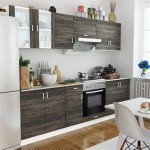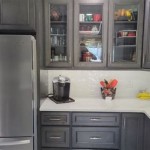Kitchen Cabinet Weight: Understanding the Factors and Implications
Kitchen cabinets are a fundamental element of any kitchen, both in terms of functionality and aesthetics. Their weight is a crucial factor to consider during the planning, installation, and even the day-to-day use of these essential fixtures. Understanding the factors that influence cabinet weight and the implications of different weight ranges is essential for making informed decisions about kitchen design and construction.
Factors Determining Kitchen Cabinet Weight
Several factors contribute to the overall weight of kitchen cabinets, each playing a significant role in the final outcome. Understanding these factors allows for a more accurate assessment of the weight and its implications:
1. Cabinet Construction Materials
The primary material used in cabinet construction has a significant impact on weight. Common materials include:
- Wood: Solid wood cabinets, such as those made from maple, cherry, or oak, are generally heavier than other options due to the density of the wood.
- Plywood: Plywood is a more affordable and lighter option, offering good stability and durability.
- Medium-Density Fiberboard (MDF): MDF is a manufactured wood product that is relatively lightweight and readily available. It is often used for cabinet boxes and doors.
- Particleboard: Particleboard is a less-expensive option, but it is not as durable or as stable as other materials.
2. Cabinet Design and Size
The design and size of cabinets also influence weight. Larger cabinets naturally weigh more than smaller ones. Complex designs with intricate moldings or decorative elements will tend to add weight compared to simple, minimalist cabinets. Also, the number of drawers and shelves within a cabinet can contribute to overall weight.
3. Drawer and Shelf Materials
The materials used for drawers and shelves can have a noticeable impact on cabinet weight. Solid wood drawers are heavier than drawers made from plywood or MDF. Solid wood shelves, often used in high-end cabinets, will weigh more than shelves made from other materials. The use of metal drawer slides and shelf supports can add weight, but they offer greater functionality and durability.
4. Cabinet Hardware and Finish
The hardware used on cabinets, such as hinges, drawer pulls, and knobs, adds to their overall weight. Decorative hardware or heavy-duty hinges can increase the weight significantly. Finishes applied to cabinets, such as paint, stains, or varnishes, also contribute to the overall weight, though the impact is usually minimal compared to other factors.
Implications of Kitchen Cabinet Weight
The weight of kitchen cabinets has numerous implications for various aspects of kitchen planning and construction:
1. Structural Support
Cabinets must be properly supported to ensure stability and prevent sagging or collapse. Heavier cabinets require stronger wall studs and additional support structures, such as bracing or ledger boards. A professional contractor or kitchen designer can determine the appropriate support based on the weight of the cabinets and the structural integrity of the walls.
2. Installation Process
The weight of cabinets impacts the ease of installation. Heavier cabinets require more manpower and specialized equipment for lifting and handling. Proper lifting techniques and safety precautions are essential during installation to prevent injuries. Contractors will adjust their tools and techniques based on the weight of the cabinets to facilitate a safe and efficient installation.
3. Shipping and Delivery
The weight of cabinets is a key factor in shipping and delivery costs. Heavier cabinets may require special handling and transportation logistics, potentially increasing transport costs. Considering the weight of cabinets during planning can help streamline logistics and minimize the expense. Shipping providers may have weight restrictions, and these need to be factored into the planning process.
Balancing Function and Aesthetics with Weight Considerations
Kitchen cabinets are a key element of home design and should be both functional and aesthetically pleasing. Considering the weight of cabinets during the decision-making process is crucial to ensure a successful and safe outcome. Understanding the factors that influence weight and their implications allows for informed choices about cabinet materials, designs, and installation techniques.

How Much Weight Can Kitchen Cabinets Safely Hold

How Much Weight Can Kitchen Cabinets Hold

Kitchen Cabinet Weight Capacities

How Much Weight Can Kitchen Cabinets Hold Find Out Now Upgradedhome Com

Which Types Of Cabinets In Kitchen Contain Most Weight

How Much Weight Can Kitchen Cabinets Hold

Make Your Kitchen Cabinets More Durable Using These Installation Tips Melfast
How Does The Mounting Of Kitchen Cabinets Work In Supporting Weight Placed Them Are There Limits Quora

How To Find The Best Kitchen Cabinets 2024 Guide Forbes Home

Organize Your Kitchen For Weight Loss Success Prevention
Related Posts








